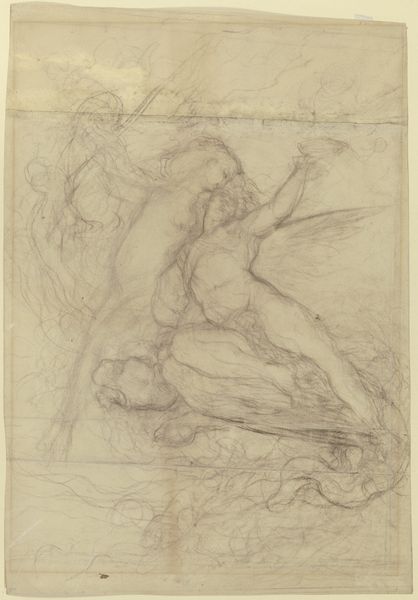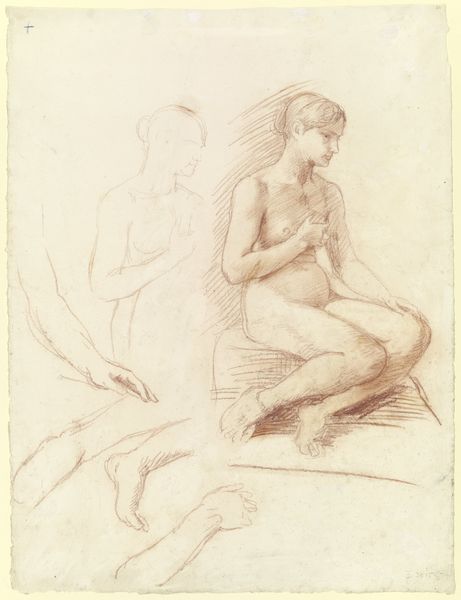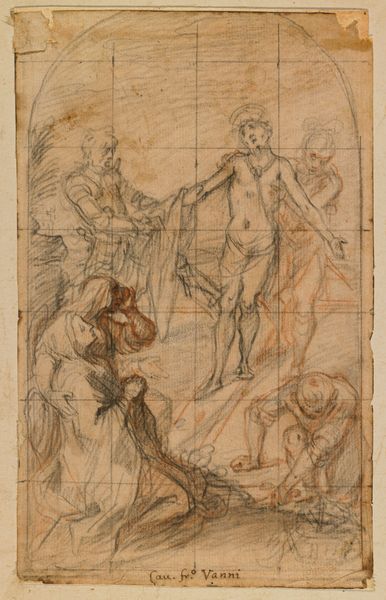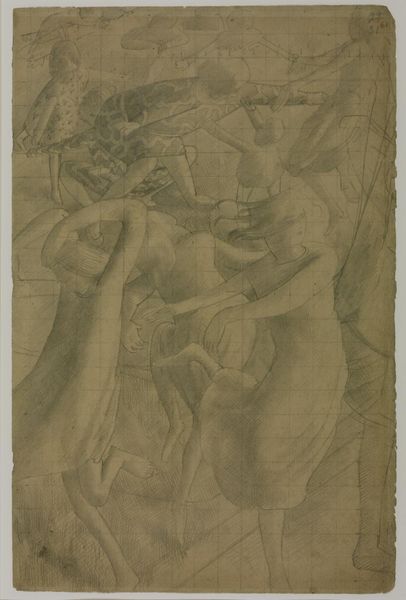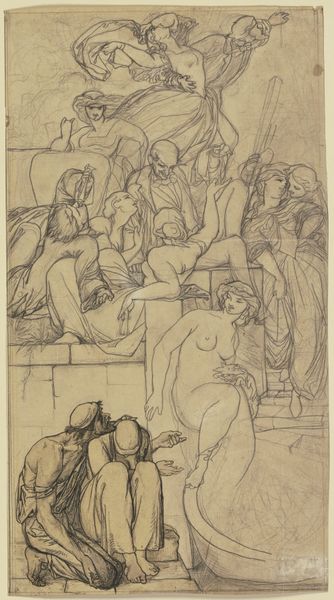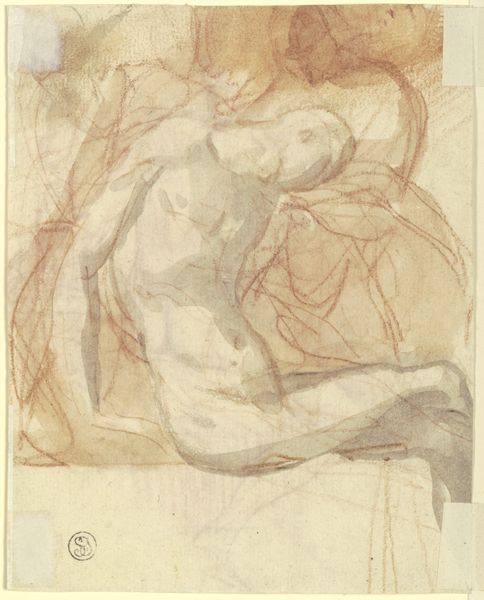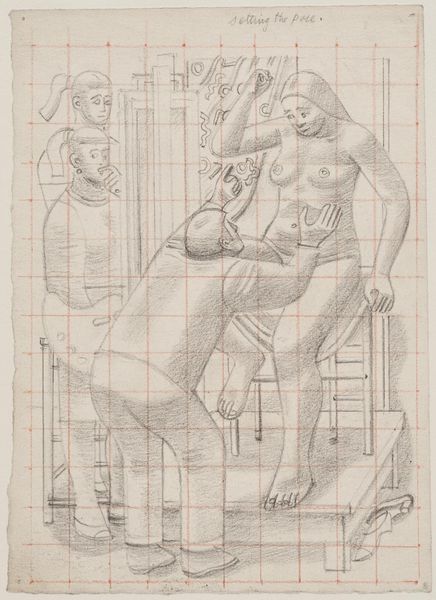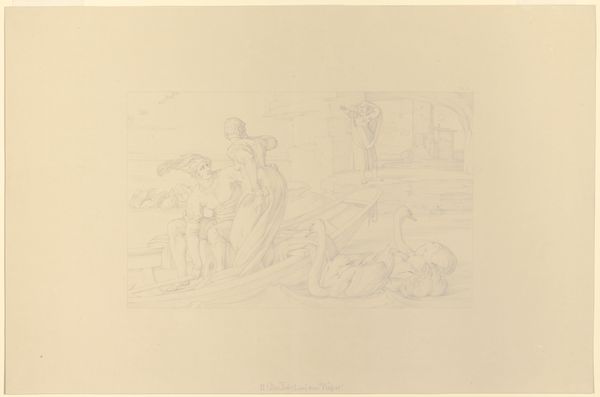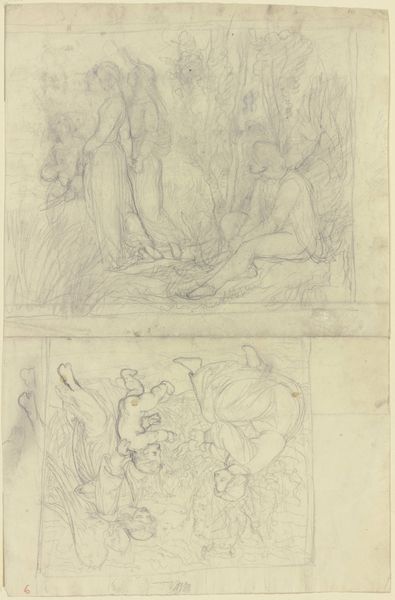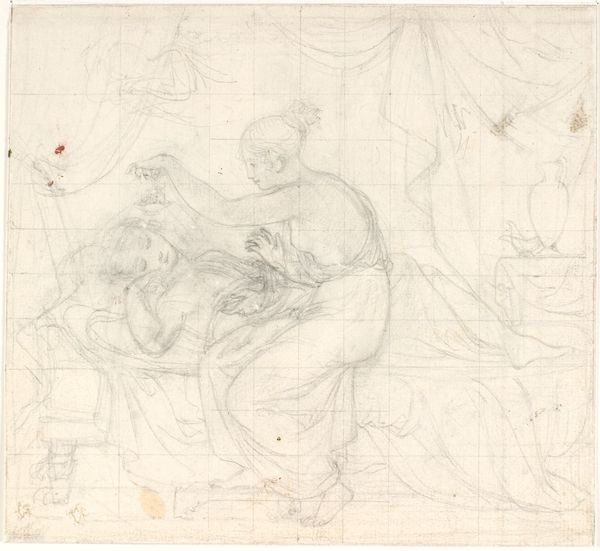
The Muses Euterpe, Polyhymnia, Calliope, Clio, and Terpsichore (recto); Sketch of a Sleeping Child (verso) 1811
0:00
0:00
drawing, print, dry-media, pencil
#
pencil drawn
#
drawing
#
neoclacissism
# print
#
pencil sketch
#
charcoal drawing
#
figuration
#
dry-media
#
pencil drawing
#
underpainting
#
pencil
#
academic-art
Dimensions: 18-13/16 x 13-5/16 in. (47.8 x 33.8 cm)
Copyright: Public Domain
Curator: Looking at this delicate work from 1811, we see Andrea Appiani’s “The Muses Euterpe, Polyhymnia, Calliope, Clio, and Terpsichore.” The medium is pencil on paper. The gridwork, still visible, reveals the artist’s preparatory method. Editor: There's something so intimate and ethereal about it. You can feel the artist’s hand and decision-making throughout. And, of course, the academic art style shows a strong interest in form. Curator: The underdrawing tells so much about the creative process itself, doesn't it? We see the materials and their potentiality so clearly. Appiani's choices--why pencil, why this particular paper--reflect the available resources and what constitutes acceptable artistic labor within his sphere. It speaks volumes about the context. Editor: Indeed. Think about the Muses, these sources of artistic inspiration. Appiani, working in the Neoclassical style, reflects the values of the period, looking to classical antiquity, but filters it through his lens. But I think about how society positioned these women. Curator: The pose in contrapposto for each recalls Greek sculpture--note especially the lines created by the shoulders versus the waist. Pencil enabled a subtlety of light and shadow crucial to neoclassical form. It democratizes image production relative to oil paint and makes sketches such as this essential learning and teaching tools. Editor: Absolutely. But it prompts the question: whose stories get told, and from what perspectives? Were women artists or subjects involved in producing, shaping or analyzing this visual legacy? These questions push back on romantic notions about genius and muse-ship. Curator: Well put. Appiani likely learned to draw using such academic approaches, drawing from life and copying ancient works to train his eye. Such drawings function as a form of capital—artists demonstrate skill to gain access to networks and commissions. Editor: By focusing on gender, identity, labor, and art making as connected processes we unearth narratives beyond traditional art history and consider the lived experiences surrounding artwork creation and meaning. Curator: It makes me think differently about what constitutes art and how deeply connected it is to production processes, the economics, and accessibility of artistic endeavors. Editor: For me, viewing "The Muses" is a powerful reminder of the ongoing dialogues shaping what we deem significant within artistic legacies and whose stories and experiences they encompass.
Comments
No comments
Be the first to comment and join the conversation on the ultimate creative platform.

